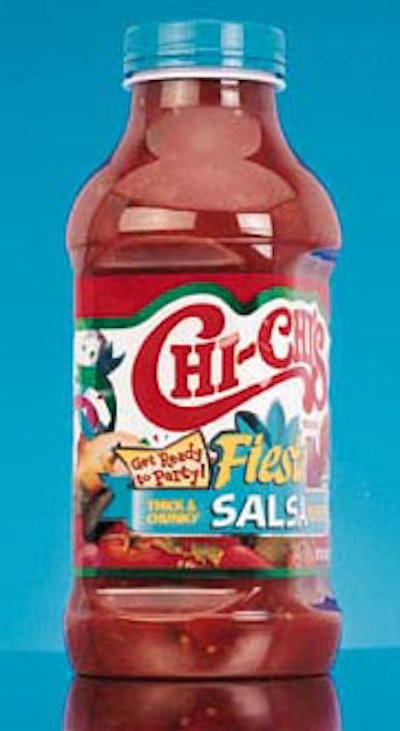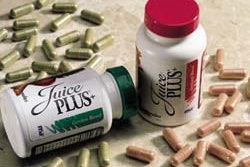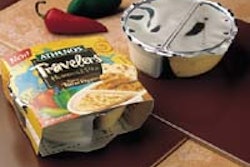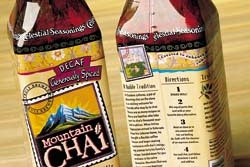
With its August club store launch of a 64-oz heat-set container of Chi Chi's® brand salsa, Hormel Foods claims it is the first to package salsa in polyethylene terephthalate. Schmalbach Lubeca (Manchester, MI) injection stretch/blow molds the container for Austin, MN-based Hormel.
The PET replaces an extrusion blown container that was made of polypropylene plus a barrier layer of ethylene vinyl alcohol. That container lacked clarity, says product manager Steven Kretschmar. "We also wanted to duplicate the proprietary glass shape in which we market our other sizes," he adds.
Desirable squared-off body
Schmalbach developed a clear, single-layer PET container that has the proprietary shape Hormel desired: a squared-off body with rounded shoulder and base. Equally critical is the container's ability to withstand hot-filling at approximately 200 deg F without deforming. The vacuum panels typically used for this purpose were not an option because they would interfere with the full-wrap, billboard-style label that Hormel wanted to use. So the container has a uniquely designed base with a rigid circumference and a flexible center that draws up into the container when the internal vacuum is created as the product cools. Schmalbach has filed for a patent on the base design, which it calls "the Stabilizer™." A ridge built into the edge of the base circumference ensures that the internal vacuum pressure affects only the specially-designed bottom and not the container's sidewalls.
Replacing front and back pressure-sensitive labels used on the old package is a full-wrap label that's hot-melt glue applied. Converted by Salem Label (Salem, OH), the label is 1.85-mil metallized biaxially oriented PP that's printed flexo in eight colors. A 1/2-mil clear PP is adhesive-laminated over the print to protect it.
More label space
"We now have 30 percent more label space to promote our product," says Kretchmar. The space can also be used to provide recipes and other merchandising messages. Also impressive, the Chi Chi's brand name wraps around the squared edge of the container to provide billboard impact on two facings.
White Cap (Downers Grove) supplies the injection-molded PP vacuum closure applied to the new container's 63-mm finish. A breakaway band provides tamper evidence.
Kretschmar says the cost of the new packaging isn't much different than the cost of the old. "The container itself is a little more expensive but the label represents a considerable savings because it's one label instead of two and it's glue-applied instead of pressure-sensitive," he adds.
Two-year shelf life
Although the container lacks the high-barrier layer of EVOH that its predecessor had, rigorous testing indicates that a two-year shelf life can be expected, says Kretchmar. Shelf life with the previous container was in the same range. The empty container weighs 95 g and is filled in Hormel's Beloit, WI, plant.
Sold in club stores east of the Mississippi, the 64-oz container is expected to do well, says Kretchmar. "We are very pleased with the new container and have already begun plans to transition our 48-oz glass into PET," he says.


























